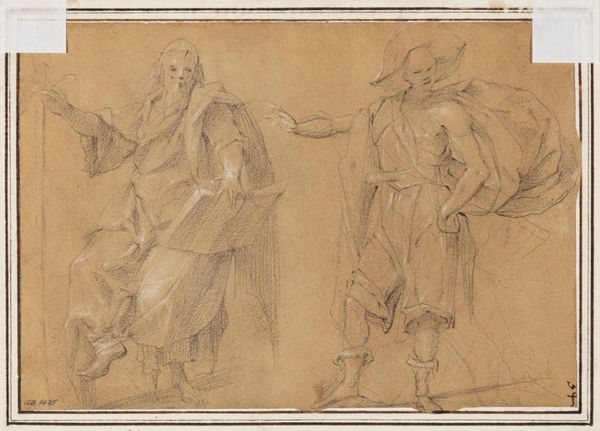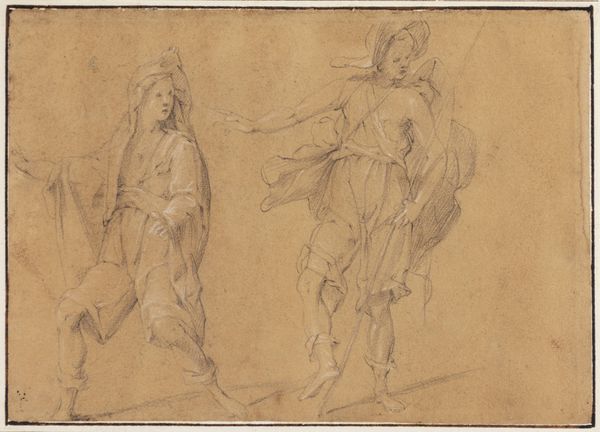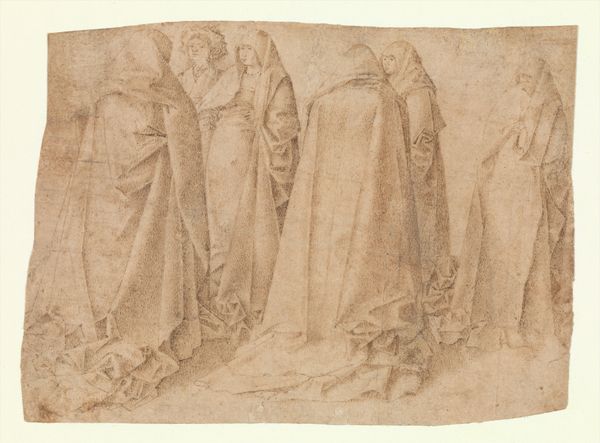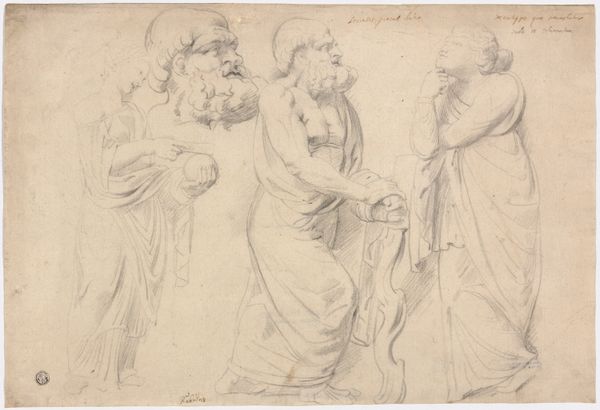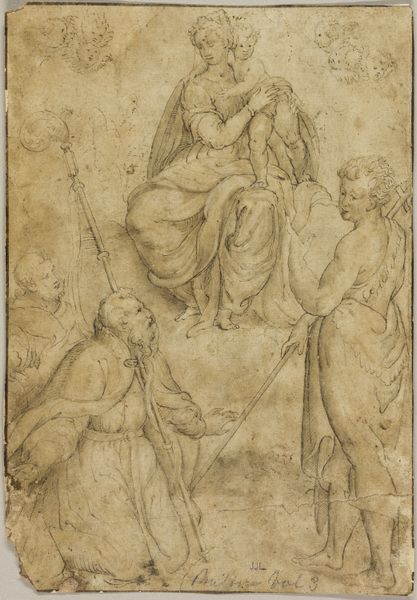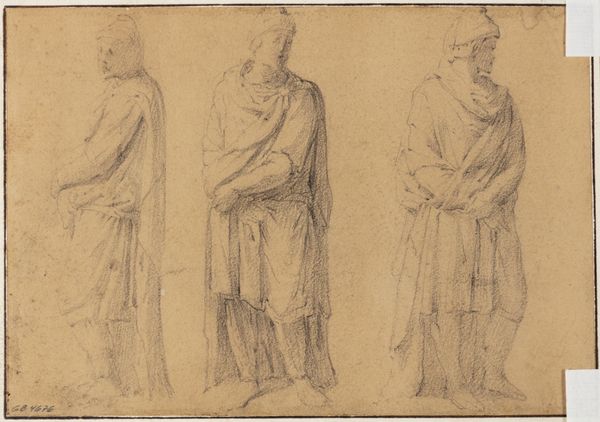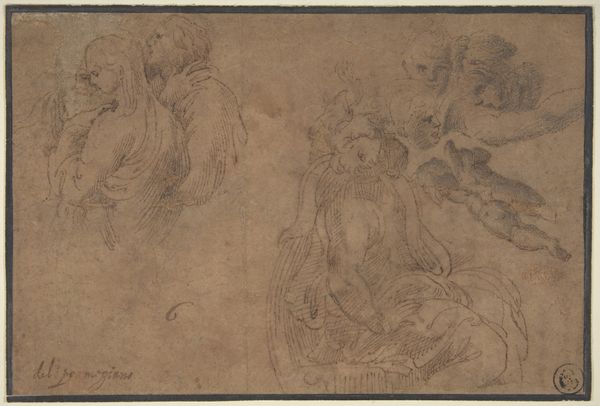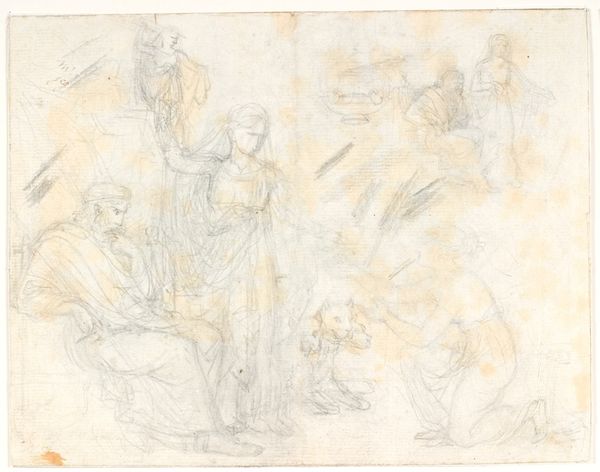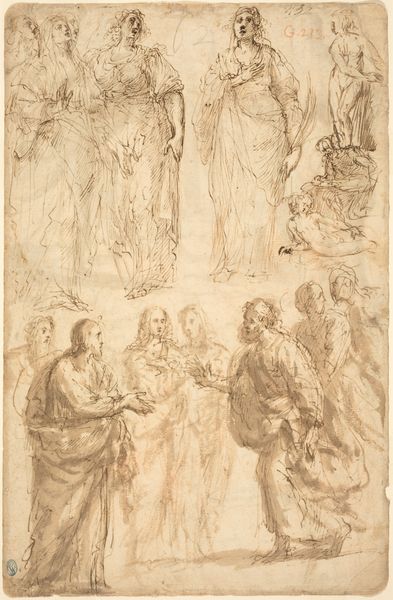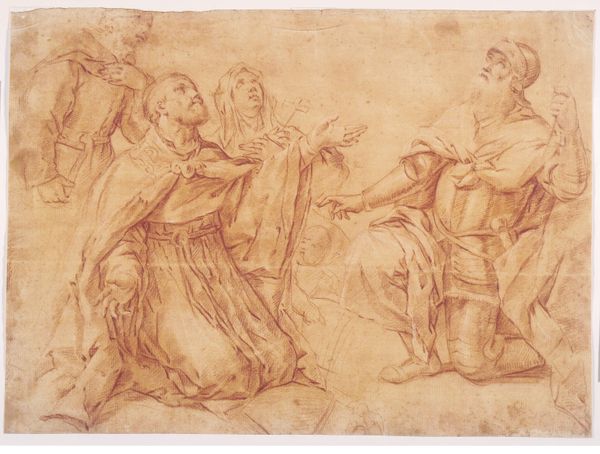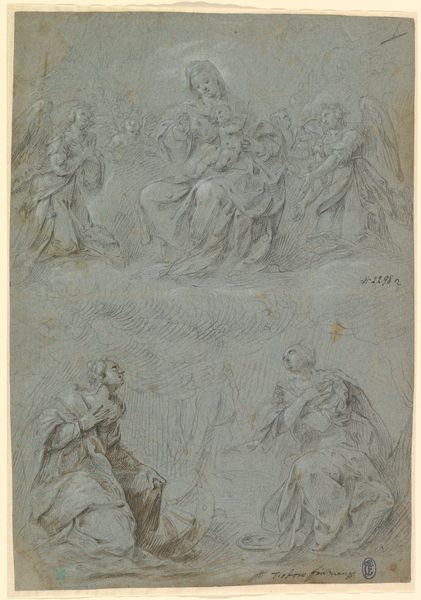
drawing, pencil
#
portrait
#
drawing
#
figuration
#
pencil
#
italian-renaissance
Dimensions: 158 mm (height) x 222 mm (width) (bladmaal)
Curator: Welcome. We’re standing before a striking drawing from the Italian Renaissance, entitled "An Apostle (?) and St. Paul." Its attributed to Filippo Paladini and was likely created between 1544 and 1615. The piece employs pencil on paper, showcasing two full figure portraits side-by-side. Editor: They both seem so introspective, almost lost in thought, which is a mood I always love. I like that this isn't about grand gestures, but something quieter, something that hints at inner struggle or revelation. Curator: Religious images and portraits served didactic roles in their era. By illustrating ideals such as piety, devotion, and morality, these portraits offer a conduit to reflect contemporary social and cultural mores. They aimed to elevate observers morally and spiritually, contributing to individual and communal identity shaping within religious groups. Editor: The details aren’t crisp and distinct. It feels almost as though I am witnessing their memories take form. The way the light catches those robes suggests weight, but then the lines tremble… it gives an ethereal presence to their otherwise imposing stature. Curator: You’re right to focus on light and texture. Renaissance drawing was very important as artists explored and defined form, particularly when planning complex painting schemes, and this use of light to create a sense of three-dimensionality reflects contemporary practices. It allows them to emphasize important spiritual figures for their patron, imbuing a solemn sense of drama to a very conventional religious representation. Editor: I’d say the conventional side enhances it. A good idea should have universal applicability and an almost classical aesthetic! But the raw simplicity of its materials really hits home here. How even a pencil drawing of the holiest of holies reminds you, that at the end of the day, it is what lies within. Curator: This has been a valuable lesson for me on seeing Renaissance portraiture afresh, as I feel sometimes we relegate Renaissance imagery solely to elite history when it also holds tremendous appeal to human experience more generally. Editor: I find myself leaving with a reminder of my humanity. Next time I grapple with ideas, maybe all I will need is an ordinary pencil and raw feelings. Thank you!
Comments
No comments
Be the first to comment and join the conversation on the ultimate creative platform.
